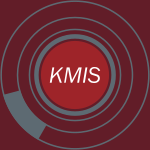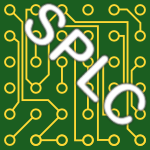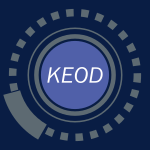200 papers:
 MSR-2015-DonadelliZR #case study #fault #replication #using
MSR-2015-DonadelliZR #case study #fault #replication #using- Organizational Volatility and Post-release Defects: A Replication Case Study Using Data from Google Chrome (SMD, YCZ, PCR), pp. 391–395.
 ICEIS-v1-2015-Hasheela #comparison #enterprise #scalability
ICEIS-v1-2015-Hasheela #comparison #enterprise #scalability- On-premise ERP Organizational Post-implementation Practices — Comparison between Large Enterprises and Small and Medium-Sized Enterprises (VH), pp. 243–250.
 ICEIS-v2-2015-CuencaBBT #case study #concept #development #framework #multi
ICEIS-v2-2015-CuencaBBT #case study #concept #development #framework #multi- Conceptual Interoperability Barriers Framework (CIBF) — A Case Study of Multi-organizational Software Development (LC, AB, ÁOB, JJMT), pp. 521–531.
 KDD-2015-ZhangYL
KDD-2015-ZhangYL- Organizational Chart Inference (JZ, PSY, YL), pp. 1435–1444.
 ICSE-v1-2015-LavalleeR #case study #developer #quality #why
ICSE-v1-2015-LavalleeR #case study #developer #quality #why- Why Good Developers Write Bad Code: An Observational Case Study of the Impacts of Organizational Factors on Software Quality (ML, PNR), pp. 677–687.
 ICSE-v2-2015-CaglayanTBHMC #fault #industrial #metric #predict #replication
ICSE-v2-2015-CaglayanTBHMC #fault #industrial #metric #predict #replication- Merits of Organizational Metrics in Defect Prediction: An Industrial Replication (BC, BT, ABB, MH, AM, EC), pp. 89–98.
 MSR-2014-GuptaSP #fault #mining #multi #perspective #process #repository
MSR-2014-GuptaSP #fault #mining #multi #perspective #process #repository- Process mining multiple repositories for software defect resolution from control and organizational perspective (MG, AS, SP), pp. 122–131.
 CSCW-2014-MullerGSW #enterprise
CSCW-2014-MullerGSW #enterprise- Geographical and organizational distances in enterprise crowdfunding (MJM, WG, TS, JW), pp. 778–789.
 HCI-AS-2014-NiedoberHMKSCJL #automation #case study #trust
HCI-AS-2014-NiedoberHMKSCJL #automation #case study #trust- Influence of Cultural, Organizational and Automation Factors on Human-Automation Trust: A Case Study of Auto-GCAS Engineers and Developmental History (DJN, NTH, GM, KK, MS, AC, WJ, JBL), pp. 473–484.
 ICEIS-v2-2014-CasalinoCMGT #effectiveness
ICEIS-v2-2014-CasalinoCMGT #effectiveness- Defining a Model for Effective e-Government Services and an Inter-organizational Cooperation in Public Sector (NC, MC, MdM, MG, GT), pp. 400–408.
 ICEIS-v3-2014-GoncalvesSC #case study #diagrams #metric #process #using
ICEIS-v3-2014-GoncalvesSC #case study #diagrams #metric #process #using- Using Activity Diagrams and DEMO to Capture Relevant Measures in an Organizational Control — A Case Study on Remote Assistance Service (AG, PS, AC), pp. 303–310.
 ICEIS-v3-2014-Guerreiro #framework #multi #towards #transaction
ICEIS-v3-2014-Guerreiro #framework #multi #towards #transaction- Towards Multi-level Organizational Control Framework to Manage the Business Transaction Workarounds (SG), pp. 288–294.
 KMIS-2014-AtrashAM #collaboration #learning
KMIS-2014-AtrashAM #collaboration #learning- Supporting Organizational Learning with Collaborative Annotation (AA, MHA, CM), pp. 237–244.
 KMIS-2014-Wagner #concept #memory management
KMIS-2014-Wagner #concept #memory management- The Concept of Team Transactive Memory Systems — Developing an Extended Model for Organizational Contexts (VW), pp. 319–325.
 SPLC-2014-GreggSLC #aspect-oriented #lessons learnt #multi #product line
SPLC-2014-GreggSLC #aspect-oriented #lessons learnt #multi #product line- Lessons from AEGIS: organizational and governance aspects of a major product line in a multi-program environment (SPG, RS, EL, PC), pp. 264–273.
 CSCW-2013-PaceODBB #community
CSCW-2013-PaceODBB #community- From organizational to community creativity: paragon leadership & creativity stories at etsy (TP, KO, ND, SB, JB), pp. 1023–1034.
 DUXU-WM-2013-LinL #design
DUXU-WM-2013-LinL #design- Management of Individual and Organizational Design Knowledge (TYL, DBL), pp. 47–56.
 HCI-UC-2013-Herberhold #enterprise #interactive #resource management
HCI-UC-2013-Herberhold #enterprise #interactive #resource management- Interaction between Enterprise Resource Planning Systems and Organizational Culture (CH), pp. 381–387.
 HCI-UC-2013-StarySF #interactive #learning
HCI-UC-2013-StarySF #interactive #learning- Agility Based on Stakeholder Interaction — Blending Organizational Learning with Interactive BPM (CS, WS, AF), pp. 456–465.
 OCSC-2013-ShabgahiSC #bibliography #comparative #education #microblog #research
OCSC-2013-ShabgahiSC #bibliography #comparative #education #microblog #research- A Comparative Review of Research Literature on Microblogging Use and Risk in Organizational and Educational Settings (SLS, NAKS, AMC), pp. 174–181.
 ICEIS-J-2013-PradoB13a #evolution #social
ICEIS-J-2013-PradoB13a #evolution #social- Capturing Semiotic and Social Factors of Organizational Evolution (ABP, MCCB), pp. 264–279.
 ICEIS-v2-2013-PradoB #evolution #using
ICEIS-v2-2013-PradoB #evolution #using- Perspectives on using Actor-Network Theory and Organizational Semiotics to Address Organizational Evolution (ABP, MCCB), pp. 173–181.
 KDIR-KMIS-2013-AtrashAM #enterprise #learning #semantics
KDIR-KMIS-2013-AtrashAM #enterprise #learning #semantics- A Semantic Model for Small and Medium-sized Enterprises to Support Organizational Learning (AA, MHA, CM), pp. 476–483.
 KDIR-KMIS-2013-GonzagaLSO #case study #performance
KDIR-KMIS-2013-GonzagaLSO #case study #performance- Performance Indicators and their Relationship with Organizational Strategy — A Study in Brazilian Companies (RPG, ATMdL, FdAeS, MPVdO), pp. 559–566.
 KEOD-2013-AveiroP13a #approach #enterprise #implementation #ontology #semantics
KEOD-2013-AveiroP13a #approach #enterprise #implementation #ontology #semantics- Implementing Organizational Self Awareness — A Semantic Mediawiki based Enterprise Ontology Management Approach (DA, DP), pp. 453–461.
 SEKE-2013-HoritaHGB #development #maturity #quality
SEKE-2013-HoritaHGB #development #maturity #quality- Maturity Model and Lesson Learned for improve the Quality of Organizational Knowledge and Human Resources Management in Software Development (S) (FEAH, MIH, FHG, RMdB), pp. 552–555.
 SEKE-2013-LosadaJ #documentation #identification #semantics
SEKE-2013-LosadaJ #documentation #identification #semantics- Processing rhetorical, morphosyntactic, and semantic features from corporate technical documents for identifying organizational domain knowledge (S) (BML, CMZJ), pp. 268–272.
 SEKE-2013-NajeraMPE #generative #modelling #ontology
SEKE-2013-NajeraMPE #generative #modelling #ontology- Generating Ontologies through Organizational Modeling (KN, AM, AP, HE), pp. 42–47.
 ER-BR-2013-FerreiraL #evolution #requirements
ER-BR-2013-FerreiraL #evolution #requirements- Requirements Engineering with a Perspective of Software Evolution — Anticipating requirements based on organizational change (MGF, JCSdPL).
 REFSQ-2013-RempelMKP #bibliography #bound #requirements #taxonomy #traceability
REFSQ-2013-RempelMKP #bibliography #bound #requirements #taxonomy #traceability- Requirements Traceability across Organizational Boundaries — A Survey and Taxonomy (PR, PM, TK, IP), pp. 125–140.
 CHI-2012-LeyPRW
CHI-2012-LeyPRW- Supporting improvisation work in inter-organizational crisis management (BL, VP, CR, TW), pp. 1529–1538.
 CHI-2012-YangAAWL #sentiment
CHI-2012-YangAAWL #sentiment- The way i talk to you: sentiment expression in an organizational context (JY, LAA, MSA, ZW, CYL), pp. 551–554.
 CAiSE-2012-EngelAZPW #case study #mining #modelling #process
CAiSE-2012-EngelAZPW #case study #mining #modelling #process- Mining Inter-organizational Business Process Models from EDI Messages: A Case Study from the Automotive Sector (RE, WMPvdA, MZ, CP, HW), pp. 222–237.
 ICEIS-v2-2012-CasalinoCMG #automation #industrial
ICEIS-v2-2012-CasalinoCMG #automation #industrial- ICT Adoption and Organizational Change — An Innovative Training System on Industrial Automation Systems for Enhancing Competitiveness of SMEs (NC, MC, MdM, MG), pp. 283–288.
 KEOD-2012-PereiraS #approach #design #information management #ontology #security
KEOD-2012-PereiraS #approach #design #information management #ontology #security- An Ontology Approach in Designing Security Information Systems to Support Organizational Security Risk Knowledge (TSMP, HMDS), pp. 461–466.
 KMIS-2012-AtkociunieneG #convergence #learning
KMIS-2012-AtkociunieneG #convergence #learning- Strategic Management, Learning and Innovation — Convergence of Strategic Management, Organizational Learning and Innovation: The Case of Lithuanian Organizations (ZA, IG), pp. 243–246.
 KMIS-2012-LageA12a #approach #process
KMIS-2012-LageA12a #approach #process- Information and Knowledge Sharing in Inter-organizational Relationships under the Process Approach (EL, BA), pp. 273–276.
 KMIS-2012-RezendeLBJMRB #framework #information management #modelling
KMIS-2012-RezendeLBJMRB #framework #information management #modelling- Modelling and Knowledge Management in the Field of Road Infrastructure Operation and Regulation — Study on the Methods Application in an Organizational Unit (LR, MAL, CRNB, JdLPCJ, LAM, SAR, CAMB), pp. 265–268.
 ICSE-2012-AstromskisJM #approach #modelling #named
ICSE-2012-AstromskisJM #approach #modelling #named- Egidio: A non-invasive approach for synthesizing organizational models (SA, AJ, ARM), pp. 1465–1466.
 CHI-2011-MejovaSBL #empirical #reuse
CHI-2011-MejovaSBL #empirical #reuse- Reuse in the wild: an empirical and ethnographic study of organizational content reuse (YM, KDS, LB, JL), pp. 2877–2886.
 CSCW-2011-Thom-SantelliMG #network #social
CSCW-2011-Thom-SantelliMG #network #social- Organizational acculturation and social networking (JTS, DRM, DG), pp. 313–316.
 IDGD-2011-DingR #network #performance
IDGD-2011-DingR #network #performance- An Investigation on the Relationship between Informal Networks and Organizational Performance (HD, JR), pp. 490–493.
 IDGD-2011-RigbyD #analysis #design #network #on the
IDGD-2011-RigbyD #analysis #design #network #on the- On the Design of Organizational Network Analysis Software (JR, HD), pp. 550–555.
 EDOC-2011-HildebrandtMS #design #graph #using
EDOC-2011-HildebrandtMS #design #graph #using- Designing a Cross-Organizational Case Management System Using Dynamic Condition Response Graphs (TTH, RRM, TS), pp. 161–170.
 ICEIS-v4-2011-XieH #approach #architecture #quality
ICEIS-v4-2011-XieH #approach #architecture #quality- An Architectural Approach to Analyze Information Quality for Inter-organizational Service (SX, MH), pp. 438–443.
 KEOD-2011-GuerreiroVT #data access #ontology #transaction
KEOD-2011-GuerreiroVT #data access #ontology #transaction- Dynamic Business Transactions Control — An Ontological Example: Organizational Access Control with DEMO (SG, AV, JMT), pp. 549–554.
 KMIS-2011-JoshiC #framework #implementation #information management #performance
KMIS-2011-JoshiC #framework #implementation #information management #performance- Knowledge Management and Organizational Performance — A KM Implementation Framework in Indian Context (HJ, DC), pp. 136–145.
 KMIS-2011-Sandkuhl
KMIS-2011-Sandkuhl- Organizational Knowledge Patterns — Definition and Characteristics (KS), pp. 230–235.
 SEKE-2011-SantosGSF #agile #empirical #implementation #learning #towards
SEKE-2011-SantosGSF #agile #empirical #implementation #learning #towards- A view towards Organizational Learning: An empirical study on Scrum implementation (VAS, AG, ACMS, ALF), pp. 583–589.
 CSEET-2010-AlefP
CSEET-2010-AlefP- Building Organizational Competitive Advantages with Strategically Aligned Technical Degrees: Dividends from a Visionary Corporate-University Partnership (ERA, DCP), pp. 144–152.
 ICEIS-DISI-2010-SantosC #information management #process #reasoning #reuse
ICEIS-DISI-2010-SantosC #information management #process #reasoning #reuse- Organizational Knowledge Management through Software Process Reuse and Case-based Reasoning (VAS, MIC), pp. 223–228.
 ICEIS-ISAS-2010-HulstijnG #analysis
ICEIS-ISAS-2010-HulstijnG #analysis- Risk Analysis for Inter-organizational Controls (JH, JG), pp. 314–320.
 ICEIS-ISAS-2010-IizukaIT #analysis #approach #effectiveness #process #re-engineering
ICEIS-ISAS-2010-IizukaIT #analysis #approach #effectiveness #process #re-engineering- Analysis of Effective Approach for Business Process re-Engineering — From the Perspective of Organizational Factors (KI, YI, KT), pp. 384–389.
 ICEIS-ISAS-2010-MakniHYT #constraints #modelling #workflow
ICEIS-ISAS-2010-MakniHYT #constraints #modelling #workflow- Modeling Time Constraints in Inter-organizational Workflows (MM, NBHA, MMY, ST), pp. 221–229.
 SAC-2010-AveiroST #enterprise #generative #modelling #towards
SAC-2010-AveiroST #enterprise #generative #modelling #towards- Towards a GOD-theory for organizational engineering: continuously modeling the continuous (re)generation, operation and deletion of the enterprise (DA, ARS, JMT), pp. 150–157.
 SAC-2010-IlayperumaZ #collaboration #modelling #perspective
SAC-2010-IlayperumaZ #collaboration #modelling #perspective- Exploring business value models from the inter-organizational collaboration perspective (TI, JZ), pp. 99–105.
 SAC-2010-WetzsteinKKLZ #monitoring #process
SAC-2010-WetzsteinKKLZ #monitoring #process- Cross-organizational process monitoring based on service choreographies (BW, DK, OK, FL, DZ), pp. 2485–2490.
 FSE-2010-Mockus #fault
FSE-2010-Mockus #fault- Organizational volatility and its effects on software defects (AM), pp. 117–126.
 ICSE-2010-HazzanD #framework #re-engineering
ICSE-2010-HazzanD #framework #re-engineering- A HOT --- Human, Organizational and Technological --- framework for a software engineering course (OH, YD), pp. 559–566.
 CAiSE-2009-BianchiniCAP #design #named #process #web #web service
CAiSE-2009-BianchiniCAP #design #named #process #web #web service- P2S: A Methodology to Enable Inter-organizational Process Design through Web Services (DB, CC, VDA, BP), pp. 334–348.
 EDOC-2009-GustafssonHFJ #modelling
EDOC-2009-GustafssonHFJ #modelling- Modeling the IT Impact on Organizational Structure (PG, DH, UF, PJ), pp. 14–23.
 ICEIS-HCI-2009-Casalino #aspect-oriented #learning
ICEIS-HCI-2009-Casalino #aspect-oriented #learning- An Innovative Model of Trans-national Learning Environment for European Senior Civil Servants — Organizational Aspects and Governance (NC), pp. 148–153.
 ICEIS-ISAS-2009-FerreiraCAB #modelling #requirements #using
ICEIS-ISAS-2009-FerreiraCAB #modelling #requirements #using- Keeping the Rationale of IS Requirements using Organizational Business Models (JJF, VMC, RMdA, FAB), pp. 292–297.
 CIKM-2009-FengXYZL #ambiguity #scalability #web
CIKM-2009-FengXYZL #ambiguity #scalability #web- Acronym extraction and disambiguation in large-scale organizational web pages (SF, YX, CY, LZ, WL), pp. 1693–1696.
 ECIR-2009-KarimzadehganWR #using
ECIR-2009-KarimzadehganWR #using- Enhancing Expert Finding Using Organizational Hierarchies (MK, RWW, MR), pp. 177–188.
 KEOD-2009-CastelaT #enterprise #process
KEOD-2009-CastelaT #enterprise #process- Enhancing Organizational Self Awareness — The As-is Enterprise Model Dynamic Updating Process (NC, JMT), pp. 315–320.
 KMIS-2009-KivijarviPT
KMIS-2009-KivijarviPT- Rehearsing for the Future — Scenarios as an Enabler and a Product of Organizational Knowledge Creation (HK, KP, MT), pp. 46–54.
 SEKE-2009-MartinezPME #modelling #requirements
SEKE-2009-MartinezPME #modelling #requirements- From Organizational Models to Software Requirements (AM, OP, JM, HE), pp. 61–66.
 SAC-2009-BolingerHRR #collaboration #effectiveness #workflow
SAC-2009-BolingerHRR #collaboration #effectiveness #workflow- Collaborative workflow assistant for organizational effectiveness (JB, GH, JR, RR), pp. 273–280.
 SAC-2009-CamaraBG #operating system #towards
SAC-2009-CamaraBG #operating system #towards- Towards organizational agent-oriented operating systems (JPC, VJB, AGF), pp. 752–756.
 SAC-2009-EckartzDWH #enterprise #how #question
SAC-2009-EckartzDWH #enterprise #how #question- Cross-organizational ERP management: how to create a successful business case? (SE, MD, RW, JvH), pp. 1599–1604.
 EDOC-2008-MahfouzBLN #dependence
EDOC-2008-MahfouzBLN #dependence- Customizing Choreography: Deriving Conversations from Organizational Dependencies (AM, LB, RCL, BN), pp. 181–190.
 ICEIS-AIDSS-2008-RomeroCSP #industrial #modelling #multi
ICEIS-AIDSS-2008-RomeroCSP #industrial #modelling #multi- Applying Multi-Agent Systems to Organizational Modelling in Industrial Environments (MCR, RMC, YWS, TRP), pp. 181–186.
 ICEIS-AIDSS-2008-SharpanskykhSB #analysis #modelling #safety
ICEIS-AIDSS-2008-SharpanskykhSB #analysis #modelling #safety- Organizational Modeling and Analysis of Safety Occurrence Reporting in Air Traffic (AS, SHS, HAPB), pp. 225–230.
 ICEIS-HCI-2008-MordechaiFD #interface #named #taxonomy #using
ICEIS-HCI-2008-MordechaiFD #interface #named #taxonomy #using- TTLS: A Grouped Display of Search Results Based on Organizational Taxonomy Using the LCC&K Interface (VM, AJF, OD), pp. 47–53.
 ICEIS-HCI-2008-SapateiroVM #collaboration #concept #documentation
ICEIS-HCI-2008-SapateiroVM #collaboration #concept #documentation- Improving Organizational Collaboration Based on Document Tagging Concept (CS, BV, PM), pp. 210–214.
 ICEIS-SAIC-2008-AldeebCS #concept #peer-to-peer #workflow
ICEIS-SAIC-2008-AldeebCS #concept #peer-to-peer #workflow- An Inter-Organizational Peer-to-Peer Workflow Management System — P2P based Virtual Organization Concept (AA, KAC, MJS), pp. 85–92.
 ICEIS-SAIC-2008-BrockeTW #e-commerce #mobile
ICEIS-SAIC-2008-BrockeTW #e-commerce #mobile- Making Use of Mobile Devices in E-Commerce — Overcoming Organizational Barriers through User Participation (JvB, BT, DW), pp. 168–173.
 SAC-2008-AveiroMT #modelling #semantics #wiki
SAC-2008-AveiroMT #modelling #semantics #wiki- Organizational modeling with a semantic wiki (DA, JM, JMT), pp. 592–593.
 SAC-2008-PeristerasLT #domain model #modelling #state of the art
SAC-2008-PeristerasLT #domain model #modelling #state of the art- Organizational engineering in public administration: the state of the art on eGovernment domain modeling (VP, NL, KAT), pp. 580–587.
 SAC-2008-SousaFVRV #approach #modelling #process #user interface
SAC-2008-SousaFVRV #approach #modelling #process #user interface- User interface derivation from business processes: a model-driven approach for organizational engineering (KSS, HMF, JV, ER, JV), pp. 553–560.
 ICSE-2008-NagappanMB #case study #empirical #quality
ICSE-2008-NagappanMB #case study #empirical #quality- The influence of organizational structure on software quality: an empirical case study (NN, BM, VRB), pp. 521–530.
 HT-2007-LeblancA #learning #using
HT-2007-LeblancA #learning #using- Using forum in an organizational learning context (AL, MHA), pp. 41–42.
 HCI-AS-2007-VanackenRLC #collaboration #user interface
HCI-AS-2007-VanackenRLC #collaboration #user interface- Focus+Roles: Socio-Organizational Conflict Resolution in Collaborative User Interfaces (DV, CR, KL, KC), pp. 788–796.
 OCSC-2007-NuschkeJ #collaboration #communication #framework #information management #tool support #using
OCSC-2007-NuschkeJ #collaboration #communication #framework #information management #tool support #using- A Framework for Inter-organizational Collaboration Using Communication and Knowledge Management Tools (PN, XJ), pp. 406–415.
 ICEIS-AIDSS-2007-Dignum #approach #performance
ICEIS-AIDSS-2007-Dignum #approach #performance- Knowledge Sharing and Organizational Performance — An Agent-mediated Approach (VD), pp. 504–509.
 SAC-2007-CaetanoPT #representation
SAC-2007-CaetanoPT #representation- Representing organizational competencies (AC, JP, JMT), pp. 1257–1262.
 SAC-2007-RosenkranzH #concept #modelling
SAC-2007-RosenkranzH #concept #modelling- Combining cybernetics and conceptual modeling: the concept of variety in organizational engineering (CR, RH), pp. 1228–1233.
 WCRE-2006-GanesanMKY #aspect-oriented #case study #product line #source code
WCRE-2006-GanesanMKY #aspect-oriented #case study #product line #source code- Discovering Organizational Aspects from the Source Code History Log during the Product Line Planning Phase — A Case Study (DG, DM, JK, KY), pp. 211–220.
 ICEIS-ISAS-2006-ShishkovDL
ICEIS-ISAS-2006-ShishkovDL- Bridging the Language-Action Perspective and Organizational Semiotics in SDBC (BS, JLGD, KL), pp. 52–60.
 ICEIS-J-2006-TrienekensKVKMS06a #aspect-oriented #development #process
ICEIS-J-2006-TrienekensKVKMS06a #aspect-oriented #development #process- Improvement of Software Development Processes, Balancing Internal and External Organizational Aspects (JJMT, RJK, FvV, DK, DM, PS), pp. 75–85.
 ICEIS-SAIC-2006-Gonzalez0 #approach #named #programming
ICEIS-SAIC-2006-Gonzalez0 #approach #named #programming- AOPOA — Organizational Approach for Agent Oriented Programming (EG, METM), pp. 75–80.
 SEKE-2006-YinW #programming
SEKE-2006-YinW #programming- Organizational Programming: Hierarchy Software Construction (ZY, JW), pp. 182–187.
 RE-2006-DanevaW #complexity #coordination #enterprise #requirements
RE-2006-DanevaW #complexity #coordination #enterprise #requirements- A Coordination Complexity Model to Support Requirements Engineering for Cross-organizational ERP (MD, RW), pp. 304–307.
 SAC-2006-CaetanoT #modelling #process
SAC-2006-CaetanoT #modelling #process- Modeling organizational actors and business processes (AC, JMT), pp. 1565–1566.
 SAC-2006-CoxBRT #framework #requirements
SAC-2006-CoxBRT #framework #requirements- A contingency view of organizational infrastructure requirements engineering (KC, SJB, PR, AT), pp. 1497–1504.
 SAC-2006-IfinedoN #enterprise #metric #resource management
SAC-2006-IfinedoN #enterprise #metric #resource management- Prioritization of enterprise resource planning (ERP) systems success measures: viewpoints of two organizational stakeholder groups (PI, NN), pp. 1554–1560.
 SAC-2006-LokkuN #approach #constraints
SAC-2006-LokkuN #approach #constraints- Morphogenetic constraint-satisfaction based approach for organizational engineering (DSL, KVN), pp. 1563–1564.
 ICSM-2005-SusaniD #contract #maintenance #specification #using
ICSM-2005-SusaniD #contract #maintenance #specification #using- Cross-Organizational Service Maintenance Using Temporal Availability Specification and Contracts (OvS, PD), pp. 230–239.
 ICEIS-v1-2005-Markus
ICEIS-v1-2005-Markus- Information technology, organizational change management, and Successful interorganizational systems (MLM), p. 15.
 ICEIS-v2-2005-FuL #framework #information management #research
ICEIS-v2-2005-FuL #framework #information management #research- An Integrated Framework for Research in Organizational Knowledge Management (SSSF, MKOL), pp. 151–156.
 ICEIS-v3-2005-HafnerBB #architecture #security #standard #web #web service #workflow
ICEIS-v3-2005-HafnerBB #architecture #security #standard #web #web service #workflow- A Security Architecture for Inter-Organizational Workflows: Putting Security Standards for Web Services Together (MH, RB, MB), pp. 128–135.
 ICEIS-v3-2005-SimoniBB #development #information management #process #social
ICEIS-v3-2005-SimoniBB #development #information management #process #social- Bringing Social Constructs to the Information System Development Process: Contributions of Organizational Semiotics (CACS, MCCB, RB), pp. 112–119.
 MoDELS-2005-HafnerB #modelling #security #uml #workflow
MoDELS-2005-HafnerB #modelling #security #uml #workflow- Realizing Model Driven Security for Inter-organizational Workflows with WS-CDL and UML 2.0 (MH, RB), pp. 39–53.
 MoDELS-2005-HafnerB #modelling #security #uml #workflow
MoDELS-2005-HafnerB #modelling #security #uml #workflow- Realizing Model Driven Security for Inter-organizational Workflows with WS-CDL and UML 2.0 (MH, RB), pp. 39–53.
 RE-2005-BittnerBPRW #requirements #reuse #scalability #variability
RE-2005-BittnerBPRW #requirements #reuse #scalability #variability- Managing Variability and Reuse of Features and Requirements for Large and Complex Organizational Structures (MB, AB, AP, MOR, MW), pp. 469–470.
 RE-2005-DanevaW #enterprise #implementation #requirements
RE-2005-DanevaW #enterprise #implementation #requirements- Requirements Engineering for Cross-organizational ERP Implementation: Undocumented Assumptions and Potential Mismatches (MD, RW), pp. 63–74.
 SAC-2005-BleisteinCV #analysis #approach #requirements
SAC-2005-BleisteinCV #analysis #approach #requirements- Strategic alignment in requirements analysis for organizational IT: an integrated approach (SJB, KC, JMV), pp. 1300–1307.
 SAC-2005-BraunWHW #approach
SAC-2005-BraunWHW #approach- Method construction — a core approach to organizational engineering (CB, FW, MH, RW), pp. 1295–1299.
 CSCW-2004-Grudin
CSCW-2004-Grudin- Return on investment and organizational adoption (JG), pp. 324–327.
 CSCW-2004-McDonaldWG #authoring #multi
CSCW-2004-McDonaldWG #authoring #multi- The multiple views of inter-organizational authoring (DWM, CW, JHG), pp. 564–573.
 CAiSE-2004-Laucins #development #integration #performance
CAiSE-2004-Laucins #development #integration #performance- Aligning Organizational Performance to IT Development and Integration (AL), p. 2.
 ICEIS-v1-2004-AbreuD #design #implementation #information management
ICEIS-v1-2004-AbreuD #design #implementation #information management- Contexts for Organizational Information System Design and Implementation (SA, DD), pp. 227–232.
 ICEIS-v1-2004-Coplien #people
ICEIS-v1-2004-Coplien #people- Organizational Patterns: Beyond Technology to People (JC), p. XV.
 ICEIS-v1-2004-EstevesP #behaviour #enterprise #implementation
ICEIS-v1-2004-EstevesP #behaviour #enterprise #implementation- Organizational and Technological Critical Success Factors Behavior Along the ERP Implementation Phases (JE, JAP), pp. 45–53.
 ICEIS-v2-2004-LoucaRGM #3d #multi #research
ICEIS-v2-2004-LoucaRGM #3d #multi #research- Multi-Agent Propositions to Manage Organizational Knowledge: Position Paper Concerning a Three-Dimensional Research Project (JL, CR, FG, VM), pp. 436–441.
 ICEIS-v3-2004-BringelCT #approach #modelling #process #quality #towards
ICEIS-v3-2004-BringelCT #approach #modelling #process #quality #towards- Business Process Modeling Towards Data Quality: A Organizational Engineering Approach (HB, AC, JMT), pp. 565–568.
 ICEIS-v3-2004-CastelaT #modelling #problem
ICEIS-v3-2004-CastelaT #modelling #problem- As Is Organizational Modeling: The Problem of Its Dynamic Management (NC, JMT), pp. 561–564.
 ICEIS-v3-2004-StamatiKSM #legacy #migration
ICEIS-v3-2004-StamatiKSM #legacy #migration- Legacy Migration as Planned Organizational Change (TS, PK, KS, DM), pp. 501–508.
 LSO-2004-FalboRBT #how #learning #risk management #using
LSO-2004-FalboRBT #how #learning #risk management #using- Learning How to Manage Risks Using Organizational Knowledge (RdAF, FBR, GB, DFT), pp. 7–18.
 LSO-2004-MontoniMRT #approach #community #information management #multi
LSO-2004-MontoniMRT #approach #community #information management #multi- Knowledge Acquisition and Communities of Practice: An Approach to Convert Individual Knowledge into Multi-organizational Knowledge (MM, RM, ARR, GHT), pp. 110–121.
 SEKE-2004-MaidantchikSM #approach #distributed #information management #xml
SEKE-2004-MaidantchikSM #approach #distributed #information management #xml- Organizational Knowledge: an XML-based Approach to Support Knowledge Management in Distributed and Heterogeneous Environments (CM, GS, MM), pp. 427–430.
 RE-2004-GordijnKSWA
RE-2004-GordijnKSWA- Developing a Domain-Specific Cross-Organizational RE Method (JG, VK, JS, RW, HA), pp. 134–143.
 SAC-2004-BeckerAN
SAC-2004-BeckerAN- Organizational engineering in public administrations: a method for process-oriented egovernment projects (JB, LA, BN), pp. 1385–1389.
 SAC-2004-Kavakli #analysis #modelling
SAC-2004-Kavakli #analysis #modelling- Modeling organizational goals: analysis of current methods (EK), pp. 1339–1343.
 CAiSE-2003-CastroSM #architecture #modelling #uml
CAiSE-2003-CastroSM #architecture #modelling #uml- Modeling Organizational Architectural Styles in UML (JC, CTLLS, JM), pp. 111–126.
 CAiSE-2003-GansJLS #modelling #network #simulation
CAiSE-2003-GansJLS #modelling #network #simulation- Deliberation in a Modeling and Simulation Environment for Inter-organizational Networks (GG, MJ, GL, DS), pp. 242–257.
 CAiSE-2003-KolpGM #analysis #requirements
CAiSE-2003-KolpGM #analysis #requirements- Organizational Patterns for Early Requirements Analysis (MK, PG, JM), pp. 617–632.
 ICEIS-v2-2003-AbeckerBE #distributed
ICEIS-v2-2003-AbeckerBE #distributed- Agent Technology for Distributed Organizational Memories: The Frodo Project (AA, AB, LvE), pp. 3–10.
 ICEIS-v2-2003-FernedaPS #mining
ICEIS-v2-2003-FernedaPS #mining- Text Mining for Organizational Intelligence (EF, HAdP, EMS), pp. 446–450.
 ICEIS-v2-2003-SrithimakulJ #development
ICEIS-v2-2003-SrithimakulJ #development- Development of an Organizational Subject (PS, CJ), pp. 562–565.
 ICEIS-v3-2003-DoFK #architecture #information management #multi
ICEIS-v3-2003-DoFK #architecture #information management #multi- Organizational Multi-Agent Architectures for Information Systems (TTD, SF, MK), pp. 89–96.
 ICEIS-v3-2003-ThomI #aspect-oriented #design #identification #workflow
ICEIS-v3-2003-ThomI #aspect-oriented #design #identification #workflow- Identifying Patterns of Workflow Design Relying on Organizational Structure Aspects (LHT, CI), pp. 462–467.
 SAC-2003-AalstKV #modelling #uml #workflow #xml
SAC-2003-AalstKV #modelling #uml #workflow #xml- Organizational Modeling in UML and XML in the Context of Workflow Systems (WMPvdA, AK, EV), pp. 603–608.
 ICSM-2002-Curtis #maturity #principle
ICSM-2002-Curtis #maturity #principle- The Principle of Organizational Maturity and E-Type Dynamics (BC), p. 68.
 CHI-2002-SnowdonG #experience #learning
CHI-2002-SnowdonG #experience #learning- Diffusing information in organizational settings: learning from experience (DS, AG), pp. 331–338.
 CSCW-2002-StevensW #bound #data access #maintenance
CSCW-2002-StevensW #bound #data access #maintenance- A new dimension in access control: studying maintenance engineering across organizational boundaries (GS, VW), pp. 196–205.
 CAiSE-2002-LiuCD #memory management #rdf
CAiSE-2002-LiuCD #memory management #rdf- Exploring RDF for Expertise Matching within an Organizational Memory (PL, JC, PMD), pp. 100–116.
 CAiSE-2002-WetzelK #architecture #concept #process #workflow
CAiSE-2002-WetzelK #architecture #concept #process #workflow- Serviceflow Beyond Workflow? Concepts and Architectures for Supporting Inter-organizational Service Processes (IW, RK), pp. 500–515.
 ICEIS-2002-AminP #enterprise #workflow
ICEIS-2002-AminP #enterprise #workflow- Inter-Organizational Workflow Management in Virtual Healthcare Enterprises (TA, HKP), pp. 799–802.
 ICEIS-2002-IochpeT #analysis #aspect-oriented #process #workflow
ICEIS-2002-IochpeT #analysis #aspect-oriented #process #workflow- Inferring Aspects of the Organizational Structure through Workflow Process Analysis (CI, LHT), pp. 758–763.
 LSO-2002-HofmannW #approach #community #learning
LSO-2002-HofmannW #approach #community #learning- Building Communities among Software Engineers: The ViSEK Approach to Intra- and Inter-Organizational Learning (BH, VW), pp. 25–33.
 SEKE-2002-MaidantchikMS #learning #requirements
SEKE-2002-MaidantchikMS #learning #requirements- Learning organizational knowledge: an evolutionary proposal for requirements engineering (CM, MM, GS), pp. 151–157.
 RE-2002-SantanderC #case study #modelling
RE-2002-SantanderC #case study #modelling- Deriving Use Cases from Organizational Modeling (VFAS, JC), pp. 32–42.
 SAC-2002-DiazWB #documentation #problem #xml
SAC-2002-DiazWB #documentation #problem #xml- Inter-organizational document exchange: facing the conversion problem with XML (LMD, EW, PB), pp. 1043–1047.
 SAC-2002-ElishRF #collaboration #learning #network
SAC-2002-ElishRF #collaboration #learning #network- Evaluating collaborative software in supporting organizational learning with Bayesian Networks (MOE, DCR, JEF), pp. 992–996.
 ICEIS-v1-2001-AbeckerBNMHHML #memory management #workflow
ICEIS-v1-2001-AbeckerBNMHHML #memory management #workflow- The DECOR Toolbox for Workflow-Embedded Organizational Memory Access (AA, AB, SN, GM, RH, CH, SM, ML), pp. 225–232.
 ICEIS-v2-2001-AudyBF #information management #learning
ICEIS-v2-2001-AudyBF #information management #learning- Information Systems Planning: Contributions from Organizational Learning (JLNA, JLB, HF), pp. 873–879.
 ICEIS-v2-2001-BarjisC #approach #aspect-oriented #modelling #petri net #process
ICEIS-v2-2001-BarjisC #approach #aspect-oriented #modelling #petri net #process- Integrating Organizational Semiotic Approach with the Temporal Aspects of Petri Nets for Business Process Modeling (JB, SC), pp. 745–752.
 ICEIS-v2-2001-IochpeT #process #workflow
ICEIS-v2-2001-IochpeT #process #workflow- Relying on the Organizational Structure to Model Workflow Processes (CI, LHT), pp. 740–744.
 LSO-2001-Henninger #learning
LSO-2001-Henninger #learning- Organizational Learning in Dynamic Domains (SH), pp. 8–16.
 SEKE-2001-NavarroH #adaptation #game studies #learning
SEKE-2001-NavarroH #adaptation #game studies #learning- Adapting Game Technology to Support Individual and Organizational Learning (EON, AvdH), pp. 347–354.
 RE-2001-CastroMAF #modelling #object-oriented #requirements
RE-2001-CastroMAF #modelling #object-oriented #requirements- Integrating Organizational Requirements and Object Oriented Modeling (JC, JM, FMRA, GACF), pp. 146–153.
 ICSE-2001-Bosch #product line
ICSE-2001-Bosch #product line- Software Product Lines: Organizational Alternatives (JB), pp. 91–100.
 CSEET-2000-Smith #development
CSEET-2000-Smith #development- Achieving Organizational Training Objectives with Short Course Development (CS), pp. 32–38.
 CIKM-2000-LeLN #modelling #visual notation
CIKM-2000-LeLN #modelling #visual notation- A Visual Tool for Structuring and Modeling Organizational Memories (THL, LL, THN), pp. 258–263.
 HT-1999-Wang #data access #hypermedia
HT-1999-Wang #data access #hypermedia- Team-and-RoleBbased Organizational Context and Access Control for Cooperative Hypermedia Environments (WW), pp. 37–46.
 HCI-CCAD-1999-BambaNF #agile #design
HCI-CCAD-1999-BambaNF #agile #design- Human cognitive model for organizational design suited to task in agile manufacturing (EB, KN, TF), pp. 1231–1235.
 HCI-CCAD-1999-Hampe #challenge
HCI-CCAD-1999-Hampe #challenge- Call center: technical and organizational challenges (JFH), pp. 1316–1320.
 HCI-CCAD-1999-KoisoN #communication #development #evaluation
HCI-CCAD-1999-KoisoN #communication #development #evaluation- Development of an evaluation system for organizational structure in emergency from the viewpoint of communication (TK, SN), pp. 578–582.
 HCI-CCAD-1999-Ui #agile #aspect-oriented #case study
HCI-CCAD-1999-Ui #agile #aspect-oriented #case study- A study on organizational aspects of agile manufacturing in Japan (TU), pp. 1250–1255.
 CAiSE-1999-KlingemannWA #adaptation #outsourcing #workflow
CAiSE-1999-KlingemannWA #adaptation #outsourcing #workflow- Adaptive Outsourcing in Cross-Organizational Workflows (JK, JW, KA), pp. 417–421.
 ICEIS-1999-Bestougeff #enterprise #modelling
ICEIS-1999-Bestougeff #enterprise #modelling- Modeling Enterprise Organizational and Decision Structures (HB), p. 782.
 ICEIS-1999-DuncanBS #enterprise #information management
ICEIS-1999-DuncanBS #enterprise #information management- A Comprehensive Organizational Model for Enterprise Knowledge Management (GD, RB, FS), p. 783.
 ICEIS-1999-HartW #aspect-oriented
ICEIS-1999-HartW #aspect-oriented- Re-Arranging the Chairs: Tackling the Ownership Aspects of Organizational Transition and Infomation Systems Support (DH, GKW), pp. 443–451.
 ICEIS-1999-PopescuM #implementation #perspective
ICEIS-1999-PopescuM #implementation #perspective- Organizational Level of Intelligent Robots-An Implementation Point of View (AP, GM), p. 779.
 SEKE-1999-AlthoffNT
SEKE-1999-AlthoffNT- Systematically Diagnosing and Improving the Perceived Usefulness of Organizational Memories (KDA, MN, CT), pp. 72–86.
 SAC-1999-SmithH #approach
SAC-1999-SmithH #approach- Organizational Alignment Through Information Technology: A Web-based Approach to Change (JHS, WH), pp. 566–570.
 CSEET-1998-HislopD #re-engineering
CSEET-1998-HislopD #re-engineering- Organizational Placement of Software Engineering in a University (GWH, JLDH), pp. 40–43.
 CSMR-1998-DakhliT #framework #maintenance #reuse
CSMR-1998-DakhliT #framework #maintenance #reuse- Software Artifacts Reuse and Maintenance: An Organizational Framework (SD, CT), pp. 228–233.
 CSMR-1998-LudwigKL #framework
CSMR-1998-LudwigKL #framework- An Organizational Framework for Mass-Customized Business Application (PL, TK, HL), pp. 37–43.
 SAC-1998-HarandiR #classification #distributed #problem
SAC-1998-HarandiR #classification #distributed #problem- Classification and organizational issues in distributed problem solving (MTH, GR), pp. 65–69.
 ICSE-1998-HerbslebG #case study #complexity #concept #metric
ICSE-1998-HerbslebG #case study #complexity #concept #metric- Conceptual Simplicity Meets Organizational Complexity: Case Study of a Corporate Metrics Program (JDH, REG), pp. 271–280.
 HCI-CC-1997-Angehrn #analysis #framework
HCI-CC-1997-Angehrn #analysis #framework- An Agent-Centered Framework for the Analysis and Diagnosis of Organizational Groupware Platforms (AAA), pp. 289–292.
 HCI-CC-1997-Bradley #interactive
HCI-CC-1997-Bradley #interactive- Interactive Creative Environments (ICE)-Strategic Organizational and Psychosocial Factors (GB), pp. 351–354.
 HCI-CC-1997-Carsten #industrial
HCI-CC-1997-Carsten #industrial- IT Cultures Within Industrial Production: Organizational Dilemmas (CC), pp. 347–350.
 HCI-CC-1997-Jarvenpaa
HCI-CC-1997-Jarvenpaa- Longitudinal Studies of Organizational Change in Administrative Jobs (EJ), pp. 369–372.
 HCI-CC-1997-KappC #design #interface
HCI-CC-1997-KappC #design #interface- Organizational Culture and Ideology in the Design of Complex Computer System Interfaces (EAK, BSC), pp. 125–128.
 HCI-CC-1997-LindstromLS #implementation
HCI-CC-1997-LindstromLS #implementation- Organizational Support and Employee Well-Being in the Implementation of New VDT Application (KL, TL, JS), pp. 373–377.
 HCI-SEC-1997-WiebeHSN #assessment #industrial
HCI-SEC-1997-WiebeHSN #assessment #industrial- Computing and Organizational Assessment in the Furniture Industry (ENW, JEH, JS, JJN), pp. 921–924.
 CSCW-1996-AckermanM #collaboration #memory management
CSCW-1996-AckermanM #collaboration #memory management- Answer Garden 2: Merging Organizational Memory with Collaborative Help (MSA, DWM), pp. 97–105.
 CSCW-1996-HalversonR #design #distributed #implementation #social #tutorial
CSCW-1996-HalversonR #design #distributed #implementation #social #tutorial- An Introduction to Distributed Cognition: Analyzing the Organizational, the Social and the Cognitive for Designing and Implementing CSCW Applications (Tutorial) (CH, YR), p. 4.
 CSCW-1996-Lin #how
CSCW-1996-Lin #how- How Organizational Structure and Culture shape CSCW (doctoral colloquium) (AL), p. 446.
 CAiSE-1996-MehandjievB #information management #programming #visual notation
CAiSE-1996-MehandjievB #information management #programming #visual notation- User-Enhanceability for Organizational Information Systems through Visual Programming (NM, LB), pp. 432–456.
 CIKM-1995-TangV #concept #transaction
CIKM-1995-TangV #concept #transaction- Transaction-oriented Work-flow Concepts in Inter-Organizational Environments (JT, JV), pp. 250–259.
 ICSE-1995-HenningerLR #analysis #approach #learning
ICSE-1995-HenningerLR #analysis #approach #learning- An Organizational Learning Approach to Domain Analysis (SH, KL, AR), pp. 95–104.
 CSCW-1994-Ackerman #case study #memory management
CSCW-1994-Ackerman #case study #memory management- Augmenting the Organizational Memory: A Field Study of Answer Garden (MSA), pp. 243–252.
 HCI-ACS-1993-HajnalC #case study #interactive
HCI-ACS-1993-HajnalC #case study #interactive- A Study of Additive and Interactive Effects of Work and Extra-Organizational Factors on Female VDT Workers (CH, PC), pp. 925–930.
 HCI-ACS-1993-Soderberg #design #how
HCI-ACS-1993-Soderberg #design #how- How the Design of the Premises Supports a New Organizational Structure as Viewed by Full-Time Operators in Large-Scaled Tele-Services (IS), pp. 839–844.
 HCI-ACS-1993-Westlander #health #research
HCI-ACS-1993-Westlander #health #research- The Simultaneous Attack on Several Work Environment Factors — An Organizational Change Project Inspired of Occupational Health Research Findings (GW), pp. 833–838.
 CSCW-1992-Orlikowski #implementation #learning
CSCW-1992-Orlikowski #implementation #learning- Learning from Notes: Organizational Issues in Groupware Implementation (WJO), pp. 362–369.
 CAiSE-1992-Reim #design #information management #integration
CAiSE-1992-Reim #design #information management #integration- Organizational Integration of the Information System Design Proces (FR), pp. 410–424.
 CAiSE-1991-KiebackN #information management
CAiSE-1991-KiebackN #information management- An Organizational Information Systems Enhancement Advice Unit (OISEAU) (AK, JN), pp. 479–501.
 CHI-1990-GeorgeVN #analysis #implementation #process
CHI-1990-GeorgeVN #analysis #implementation #process- The organizational implementation of an electronic meeting system: an analysis of the innovation process (JFG, JSV, JFNJ), pp. 361–368.
 CSCW-1988-Grudin #design #evaluation #interface #problem #why
CSCW-1988-Grudin #design #evaluation #interface #problem #why- Why CSCW Applications Fail: Problems in the Design and Evaluation of Organization of Organizational Interfaces (JG), pp. 65–84.
 HCI-SES-1987-AndersonJSA #empirical
HCI-SES-1987-AndersonJSA #empirical- Diffusion and Impact of Computer in Organizational Settings: Empirical Findings form a Hospital (JGA, SJJ, HMS, MMA), pp. 3–10.
 HCI-SES-1987-LundsgaardeW
HCI-SES-1987-LundsgaardeW- Organizational Barriers to the Diffusion of Computer Technology (HPL, JWW), pp. 11–16.
 CSCW-1986-CrowstonML #case study #design
CSCW-1986-CrowstonML #case study #design- Cognitive science and organizational design: a case study of computer conferencing (KC, TWM, FL), pp. 43–61.
 ICSE-1979-JefferyL #comparison #programming
ICSE-1979-JefferyL #comparison #programming- An Inter-Organizational Comparison of Programming Productivity (DRJ, MJL), pp. 369–377.
 DAC-1976-HellerF #approach
DAC-1976-HellerF #approach- An organizational approach to routing printed circuit boards (BDH, RSF), pp. 168–171.
 MSR-2015-DonadelliZR #case study #fault #replication #using
MSR-2015-DonadelliZR #case study #fault #replication #using ICEIS-v1-2015-Hasheela #comparison #enterprise #scalability
ICEIS-v1-2015-Hasheela #comparison #enterprise #scalability ICEIS-v2-2015-CuencaBBT #case study #concept #development #framework #multi
ICEIS-v2-2015-CuencaBBT #case study #concept #development #framework #multi KDD-2015-ZhangYL
KDD-2015-ZhangYL ICSE-v1-2015-LavalleeR #case study #developer #quality #why
ICSE-v1-2015-LavalleeR #case study #developer #quality #why ICSE-v2-2015-CaglayanTBHMC #fault #industrial #metric #predict #replication
ICSE-v2-2015-CaglayanTBHMC #fault #industrial #metric #predict #replication MSR-2014-GuptaSP #fault #mining #multi #perspective #process #repository
MSR-2014-GuptaSP #fault #mining #multi #perspective #process #repository CSCW-2014-MullerGSW #enterprise
CSCW-2014-MullerGSW #enterprise HCI-AS-2014-NiedoberHMKSCJL #automation #case study #trust
HCI-AS-2014-NiedoberHMKSCJL #automation #case study #trust ICEIS-v2-2014-CasalinoCMGT #effectiveness
ICEIS-v2-2014-CasalinoCMGT #effectiveness ICEIS-v3-2014-GoncalvesSC #case study #diagrams #metric #process #using
ICEIS-v3-2014-GoncalvesSC #case study #diagrams #metric #process #using ICEIS-v3-2014-Guerreiro #framework #multi #towards #transaction
ICEIS-v3-2014-Guerreiro #framework #multi #towards #transaction KMIS-2014-AtrashAM #collaboration #learning
KMIS-2014-AtrashAM #collaboration #learning KMIS-2014-Wagner #concept #memory management
KMIS-2014-Wagner #concept #memory management SPLC-2014-GreggSLC #aspect-oriented #lessons learnt #multi #product line
SPLC-2014-GreggSLC #aspect-oriented #lessons learnt #multi #product line CSCW-2013-PaceODBB #community
CSCW-2013-PaceODBB #community DUXU-WM-2013-LinL #design
DUXU-WM-2013-LinL #design HCI-UC-2013-Herberhold #enterprise #interactive #resource management
HCI-UC-2013-Herberhold #enterprise #interactive #resource management HCI-UC-2013-StarySF #interactive #learning
HCI-UC-2013-StarySF #interactive #learning OCSC-2013-ShabgahiSC #bibliography #comparative #education #microblog #research
OCSC-2013-ShabgahiSC #bibliography #comparative #education #microblog #research ICEIS-J-2013-PradoB13a #evolution #social
ICEIS-J-2013-PradoB13a #evolution #social ICEIS-v2-2013-PradoB #evolution #using
ICEIS-v2-2013-PradoB #evolution #using KDIR-KMIS-2013-AtrashAM #enterprise #learning #semantics
KDIR-KMIS-2013-AtrashAM #enterprise #learning #semantics KDIR-KMIS-2013-GonzagaLSO #case study #performance
KDIR-KMIS-2013-GonzagaLSO #case study #performance KEOD-2013-AveiroP13a #approach #enterprise #implementation #ontology #semantics
KEOD-2013-AveiroP13a #approach #enterprise #implementation #ontology #semantics SEKE-2013-HoritaHGB #development #maturity #quality
SEKE-2013-HoritaHGB #development #maturity #quality SEKE-2013-LosadaJ #documentation #identification #semantics
SEKE-2013-LosadaJ #documentation #identification #semantics SEKE-2013-NajeraMPE #generative #modelling #ontology
SEKE-2013-NajeraMPE #generative #modelling #ontology ER-BR-2013-FerreiraL #evolution #requirements
ER-BR-2013-FerreiraL #evolution #requirements REFSQ-2013-RempelMKP #bibliography #bound #requirements #taxonomy #traceability
REFSQ-2013-RempelMKP #bibliography #bound #requirements #taxonomy #traceability CHI-2012-LeyPRW
CHI-2012-LeyPRW CHI-2012-YangAAWL #sentiment
CHI-2012-YangAAWL #sentiment CAiSE-2012-EngelAZPW #case study #mining #modelling #process
CAiSE-2012-EngelAZPW #case study #mining #modelling #process ICEIS-v2-2012-CasalinoCMG #automation #industrial
ICEIS-v2-2012-CasalinoCMG #automation #industrial KEOD-2012-PereiraS #approach #design #information management #ontology #security
KEOD-2012-PereiraS #approach #design #information management #ontology #security KMIS-2012-AtkociunieneG #convergence #learning
KMIS-2012-AtkociunieneG #convergence #learning KMIS-2012-LageA12a #approach #process
KMIS-2012-LageA12a #approach #process KMIS-2012-RezendeLBJMRB #framework #information management #modelling
KMIS-2012-RezendeLBJMRB #framework #information management #modelling ICSE-2012-AstromskisJM #approach #modelling #named
ICSE-2012-AstromskisJM #approach #modelling #named CHI-2011-MejovaSBL #empirical #reuse
CHI-2011-MejovaSBL #empirical #reuse CSCW-2011-Thom-SantelliMG #network #social
CSCW-2011-Thom-SantelliMG #network #social IDGD-2011-DingR #network #performance
IDGD-2011-DingR #network #performance IDGD-2011-RigbyD #analysis #design #network #on the
IDGD-2011-RigbyD #analysis #design #network #on the EDOC-2011-HildebrandtMS #design #graph #using
EDOC-2011-HildebrandtMS #design #graph #using ICEIS-v4-2011-XieH #approach #architecture #quality
ICEIS-v4-2011-XieH #approach #architecture #quality KEOD-2011-GuerreiroVT #data access #ontology #transaction
KEOD-2011-GuerreiroVT #data access #ontology #transaction KMIS-2011-JoshiC #framework #implementation #information management #performance
KMIS-2011-JoshiC #framework #implementation #information management #performance KMIS-2011-Sandkuhl
KMIS-2011-Sandkuhl SEKE-2011-SantosGSF #agile #empirical #implementation #learning #towards
SEKE-2011-SantosGSF #agile #empirical #implementation #learning #towards CSEET-2010-AlefP
CSEET-2010-AlefP ICEIS-DISI-2010-SantosC #information management #process #reasoning #reuse
ICEIS-DISI-2010-SantosC #information management #process #reasoning #reuse ICEIS-ISAS-2010-HulstijnG #analysis
ICEIS-ISAS-2010-HulstijnG #analysis ICEIS-ISAS-2010-IizukaIT #analysis #approach #effectiveness #process #re-engineering
ICEIS-ISAS-2010-IizukaIT #analysis #approach #effectiveness #process #re-engineering ICEIS-ISAS-2010-MakniHYT #constraints #modelling #workflow
ICEIS-ISAS-2010-MakniHYT #constraints #modelling #workflow SAC-2010-AveiroST #enterprise #generative #modelling #towards
SAC-2010-AveiroST #enterprise #generative #modelling #towards SAC-2010-IlayperumaZ #collaboration #modelling #perspective
SAC-2010-IlayperumaZ #collaboration #modelling #perspective SAC-2010-WetzsteinKKLZ #monitoring #process
SAC-2010-WetzsteinKKLZ #monitoring #process FSE-2010-Mockus #fault
FSE-2010-Mockus #fault ICSE-2010-HazzanD #framework #re-engineering
ICSE-2010-HazzanD #framework #re-engineering CAiSE-2009-BianchiniCAP #design #named #process #web #web service
CAiSE-2009-BianchiniCAP #design #named #process #web #web service EDOC-2009-GustafssonHFJ #modelling
EDOC-2009-GustafssonHFJ #modelling ICEIS-HCI-2009-Casalino #aspect-oriented #learning
ICEIS-HCI-2009-Casalino #aspect-oriented #learning ICEIS-ISAS-2009-FerreiraCAB #modelling #requirements #using
ICEIS-ISAS-2009-FerreiraCAB #modelling #requirements #using CIKM-2009-FengXYZL #ambiguity #scalability #web
CIKM-2009-FengXYZL #ambiguity #scalability #web ECIR-2009-KarimzadehganWR #using
ECIR-2009-KarimzadehganWR #using KEOD-2009-CastelaT #enterprise #process
KEOD-2009-CastelaT #enterprise #process KMIS-2009-KivijarviPT
KMIS-2009-KivijarviPT SEKE-2009-MartinezPME #modelling #requirements
SEKE-2009-MartinezPME #modelling #requirements SAC-2009-BolingerHRR #collaboration #effectiveness #workflow
SAC-2009-BolingerHRR #collaboration #effectiveness #workflow SAC-2009-CamaraBG #operating system #towards
SAC-2009-CamaraBG #operating system #towards SAC-2009-EckartzDWH #enterprise #how #question
SAC-2009-EckartzDWH #enterprise #how #question EDOC-2008-MahfouzBLN #dependence
EDOC-2008-MahfouzBLN #dependence ICEIS-AIDSS-2008-RomeroCSP #industrial #modelling #multi
ICEIS-AIDSS-2008-RomeroCSP #industrial #modelling #multi ICEIS-AIDSS-2008-SharpanskykhSB #analysis #modelling #safety
ICEIS-AIDSS-2008-SharpanskykhSB #analysis #modelling #safety ICEIS-HCI-2008-MordechaiFD #interface #named #taxonomy #using
ICEIS-HCI-2008-MordechaiFD #interface #named #taxonomy #using ICEIS-HCI-2008-SapateiroVM #collaboration #concept #documentation
ICEIS-HCI-2008-SapateiroVM #collaboration #concept #documentation ICEIS-SAIC-2008-AldeebCS #concept #peer-to-peer #workflow
ICEIS-SAIC-2008-AldeebCS #concept #peer-to-peer #workflow ICEIS-SAIC-2008-BrockeTW #e-commerce #mobile
ICEIS-SAIC-2008-BrockeTW #e-commerce #mobile SAC-2008-AveiroMT #modelling #semantics #wiki
SAC-2008-AveiroMT #modelling #semantics #wiki SAC-2008-PeristerasLT #domain model #modelling #state of the art
SAC-2008-PeristerasLT #domain model #modelling #state of the art SAC-2008-SousaFVRV #approach #modelling #process #user interface
SAC-2008-SousaFVRV #approach #modelling #process #user interface ICSE-2008-NagappanMB #case study #empirical #quality
ICSE-2008-NagappanMB #case study #empirical #quality HT-2007-LeblancA #learning #using
HT-2007-LeblancA #learning #using HCI-AS-2007-VanackenRLC #collaboration #user interface
HCI-AS-2007-VanackenRLC #collaboration #user interface OCSC-2007-NuschkeJ #collaboration #communication #framework #information management #tool support #using
OCSC-2007-NuschkeJ #collaboration #communication #framework #information management #tool support #using ICEIS-AIDSS-2007-Dignum #approach #performance
ICEIS-AIDSS-2007-Dignum #approach #performance SAC-2007-CaetanoPT #representation
SAC-2007-CaetanoPT #representation SAC-2007-RosenkranzH #concept #modelling
SAC-2007-RosenkranzH #concept #modelling WCRE-2006-GanesanMKY #aspect-oriented #case study #product line #source code
WCRE-2006-GanesanMKY #aspect-oriented #case study #product line #source code ICEIS-ISAS-2006-ShishkovDL
ICEIS-ISAS-2006-ShishkovDL ICEIS-J-2006-TrienekensKVKMS06a #aspect-oriented #development #process
ICEIS-J-2006-TrienekensKVKMS06a #aspect-oriented #development #process ICEIS-SAIC-2006-Gonzalez0 #approach #named #programming
ICEIS-SAIC-2006-Gonzalez0 #approach #named #programming SEKE-2006-YinW #programming
SEKE-2006-YinW #programming RE-2006-DanevaW #complexity #coordination #enterprise #requirements
RE-2006-DanevaW #complexity #coordination #enterprise #requirements SAC-2006-CaetanoT #modelling #process
SAC-2006-CaetanoT #modelling #process SAC-2006-CoxBRT #framework #requirements
SAC-2006-CoxBRT #framework #requirements SAC-2006-IfinedoN #enterprise #metric #resource management
SAC-2006-IfinedoN #enterprise #metric #resource management SAC-2006-LokkuN #approach #constraints
SAC-2006-LokkuN #approach #constraints ICSM-2005-SusaniD #contract #maintenance #specification #using
ICSM-2005-SusaniD #contract #maintenance #specification #using ICEIS-v1-2005-Markus
ICEIS-v1-2005-Markus ICEIS-v2-2005-FuL #framework #information management #research
ICEIS-v2-2005-FuL #framework #information management #research ICEIS-v3-2005-HafnerBB #architecture #security #standard #web #web service #workflow
ICEIS-v3-2005-HafnerBB #architecture #security #standard #web #web service #workflow ICEIS-v3-2005-SimoniBB #development #information management #process #social
ICEIS-v3-2005-SimoniBB #development #information management #process #social MoDELS-2005-HafnerB #modelling #security #uml #workflow
MoDELS-2005-HafnerB #modelling #security #uml #workflow MoDELS-2005-HafnerB #modelling #security #uml #workflow
MoDELS-2005-HafnerB #modelling #security #uml #workflow RE-2005-BittnerBPRW #requirements #reuse #scalability #variability
RE-2005-BittnerBPRW #requirements #reuse #scalability #variability RE-2005-DanevaW #enterprise #implementation #requirements
RE-2005-DanevaW #enterprise #implementation #requirements SAC-2005-BleisteinCV #analysis #approach #requirements
SAC-2005-BleisteinCV #analysis #approach #requirements SAC-2005-BraunWHW #approach
SAC-2005-BraunWHW #approach CSCW-2004-Grudin
CSCW-2004-Grudin CSCW-2004-McDonaldWG #authoring #multi
CSCW-2004-McDonaldWG #authoring #multi CAiSE-2004-Laucins #development #integration #performance
CAiSE-2004-Laucins #development #integration #performance ICEIS-v1-2004-AbreuD #design #implementation #information management
ICEIS-v1-2004-AbreuD #design #implementation #information management ICEIS-v1-2004-Coplien #people
ICEIS-v1-2004-Coplien #people ICEIS-v1-2004-EstevesP #behaviour #enterprise #implementation
ICEIS-v1-2004-EstevesP #behaviour #enterprise #implementation ICEIS-v2-2004-LoucaRGM #3d #multi #research
ICEIS-v2-2004-LoucaRGM #3d #multi #research ICEIS-v3-2004-BringelCT #approach #modelling #process #quality #towards
ICEIS-v3-2004-BringelCT #approach #modelling #process #quality #towards ICEIS-v3-2004-CastelaT #modelling #problem
ICEIS-v3-2004-CastelaT #modelling #problem ICEIS-v3-2004-StamatiKSM #legacy #migration
ICEIS-v3-2004-StamatiKSM #legacy #migration LSO-2004-FalboRBT #how #learning #risk management #using
LSO-2004-FalboRBT #how #learning #risk management #using LSO-2004-MontoniMRT #approach #community #information management #multi
LSO-2004-MontoniMRT #approach #community #information management #multi SEKE-2004-MaidantchikSM #approach #distributed #information management #xml
SEKE-2004-MaidantchikSM #approach #distributed #information management #xml RE-2004-GordijnKSWA
RE-2004-GordijnKSWA SAC-2004-BeckerAN
SAC-2004-BeckerAN SAC-2004-Kavakli #analysis #modelling
SAC-2004-Kavakli #analysis #modelling CAiSE-2003-CastroSM #architecture #modelling #uml
CAiSE-2003-CastroSM #architecture #modelling #uml CAiSE-2003-GansJLS #modelling #network #simulation
CAiSE-2003-GansJLS #modelling #network #simulation CAiSE-2003-KolpGM #analysis #requirements
CAiSE-2003-KolpGM #analysis #requirements ICEIS-v2-2003-AbeckerBE #distributed
ICEIS-v2-2003-AbeckerBE #distributed ICEIS-v2-2003-FernedaPS #mining
ICEIS-v2-2003-FernedaPS #mining ICEIS-v2-2003-SrithimakulJ #development
ICEIS-v2-2003-SrithimakulJ #development ICEIS-v3-2003-DoFK #architecture #information management #multi
ICEIS-v3-2003-DoFK #architecture #information management #multi ICEIS-v3-2003-ThomI #aspect-oriented #design #identification #workflow
ICEIS-v3-2003-ThomI #aspect-oriented #design #identification #workflow SAC-2003-AalstKV #modelling #uml #workflow #xml
SAC-2003-AalstKV #modelling #uml #workflow #xml ICSM-2002-Curtis #maturity #principle
ICSM-2002-Curtis #maturity #principle CHI-2002-SnowdonG #experience #learning
CHI-2002-SnowdonG #experience #learning CSCW-2002-StevensW #bound #data access #maintenance
CSCW-2002-StevensW #bound #data access #maintenance CAiSE-2002-LiuCD #memory management #rdf
CAiSE-2002-LiuCD #memory management #rdf CAiSE-2002-WetzelK #architecture #concept #process #workflow
CAiSE-2002-WetzelK #architecture #concept #process #workflow ICEIS-2002-AminP #enterprise #workflow
ICEIS-2002-AminP #enterprise #workflow ICEIS-2002-IochpeT #analysis #aspect-oriented #process #workflow
ICEIS-2002-IochpeT #analysis #aspect-oriented #process #workflow LSO-2002-HofmannW #approach #community #learning
LSO-2002-HofmannW #approach #community #learning SEKE-2002-MaidantchikMS #learning #requirements
SEKE-2002-MaidantchikMS #learning #requirements RE-2002-SantanderC #case study #modelling
RE-2002-SantanderC #case study #modelling SAC-2002-DiazWB #documentation #problem #xml
SAC-2002-DiazWB #documentation #problem #xml SAC-2002-ElishRF #collaboration #learning #network
SAC-2002-ElishRF #collaboration #learning #network ICEIS-v1-2001-AbeckerBNMHHML #memory management #workflow
ICEIS-v1-2001-AbeckerBNMHHML #memory management #workflow ICEIS-v2-2001-AudyBF #information management #learning
ICEIS-v2-2001-AudyBF #information management #learning ICEIS-v2-2001-BarjisC #approach #aspect-oriented #modelling #petri net #process
ICEIS-v2-2001-BarjisC #approach #aspect-oriented #modelling #petri net #process ICEIS-v2-2001-IochpeT #process #workflow
ICEIS-v2-2001-IochpeT #process #workflow LSO-2001-Henninger #learning
LSO-2001-Henninger #learning SEKE-2001-NavarroH #adaptation #game studies #learning
SEKE-2001-NavarroH #adaptation #game studies #learning RE-2001-CastroMAF #modelling #object-oriented #requirements
RE-2001-CastroMAF #modelling #object-oriented #requirements ICSE-2001-Bosch #product line
ICSE-2001-Bosch #product line CSEET-2000-Smith #development
CSEET-2000-Smith #development CIKM-2000-LeLN #modelling #visual notation
CIKM-2000-LeLN #modelling #visual notation HT-1999-Wang #data access #hypermedia
HT-1999-Wang #data access #hypermedia HCI-CCAD-1999-BambaNF #agile #design
HCI-CCAD-1999-BambaNF #agile #design HCI-CCAD-1999-Hampe #challenge
HCI-CCAD-1999-Hampe #challenge HCI-CCAD-1999-KoisoN #communication #development #evaluation
HCI-CCAD-1999-KoisoN #communication #development #evaluation HCI-CCAD-1999-Ui #agile #aspect-oriented #case study
HCI-CCAD-1999-Ui #agile #aspect-oriented #case study CAiSE-1999-KlingemannWA #adaptation #outsourcing #workflow
CAiSE-1999-KlingemannWA #adaptation #outsourcing #workflow ICEIS-1999-Bestougeff #enterprise #modelling
ICEIS-1999-Bestougeff #enterprise #modelling ICEIS-1999-DuncanBS #enterprise #information management
ICEIS-1999-DuncanBS #enterprise #information management ICEIS-1999-HartW #aspect-oriented
ICEIS-1999-HartW #aspect-oriented ICEIS-1999-PopescuM #implementation #perspective
ICEIS-1999-PopescuM #implementation #perspective SEKE-1999-AlthoffNT
SEKE-1999-AlthoffNT SAC-1999-SmithH #approach
SAC-1999-SmithH #approach CSEET-1998-HislopD #re-engineering
CSEET-1998-HislopD #re-engineering CSMR-1998-DakhliT #framework #maintenance #reuse
CSMR-1998-DakhliT #framework #maintenance #reuse CSMR-1998-LudwigKL #framework
CSMR-1998-LudwigKL #framework SAC-1998-HarandiR #classification #distributed #problem
SAC-1998-HarandiR #classification #distributed #problem ICSE-1998-HerbslebG #case study #complexity #concept #metric
ICSE-1998-HerbslebG #case study #complexity #concept #metric HCI-CC-1997-Angehrn #analysis #framework
HCI-CC-1997-Angehrn #analysis #framework HCI-CC-1997-Bradley #interactive
HCI-CC-1997-Bradley #interactive HCI-CC-1997-Carsten #industrial
HCI-CC-1997-Carsten #industrial HCI-CC-1997-Jarvenpaa
HCI-CC-1997-Jarvenpaa HCI-CC-1997-KappC #design #interface
HCI-CC-1997-KappC #design #interface HCI-CC-1997-LindstromLS #implementation
HCI-CC-1997-LindstromLS #implementation HCI-SEC-1997-WiebeHSN #assessment #industrial
HCI-SEC-1997-WiebeHSN #assessment #industrial CSCW-1996-AckermanM #collaboration #memory management
CSCW-1996-AckermanM #collaboration #memory management CSCW-1996-HalversonR #design #distributed #implementation #social #tutorial
CSCW-1996-HalversonR #design #distributed #implementation #social #tutorial CSCW-1996-Lin #how
CSCW-1996-Lin #how CAiSE-1996-MehandjievB #information management #programming #visual notation
CAiSE-1996-MehandjievB #information management #programming #visual notation CIKM-1995-TangV #concept #transaction
CIKM-1995-TangV #concept #transaction ICSE-1995-HenningerLR #analysis #approach #learning
ICSE-1995-HenningerLR #analysis #approach #learning CSCW-1994-Ackerman #case study #memory management
CSCW-1994-Ackerman #case study #memory management HCI-ACS-1993-HajnalC #case study #interactive
HCI-ACS-1993-HajnalC #case study #interactive HCI-ACS-1993-Soderberg #design #how
HCI-ACS-1993-Soderberg #design #how HCI-ACS-1993-Westlander #health #research
HCI-ACS-1993-Westlander #health #research CSCW-1992-Orlikowski #implementation #learning
CSCW-1992-Orlikowski #implementation #learning CAiSE-1992-Reim #design #information management #integration
CAiSE-1992-Reim #design #information management #integration CAiSE-1991-KiebackN #information management
CAiSE-1991-KiebackN #information management CHI-1990-GeorgeVN #analysis #implementation #process
CHI-1990-GeorgeVN #analysis #implementation #process CSCW-1988-Grudin #design #evaluation #interface #problem #why
CSCW-1988-Grudin #design #evaluation #interface #problem #why HCI-SES-1987-AndersonJSA #empirical
HCI-SES-1987-AndersonJSA #empirical HCI-SES-1987-LundsgaardeW
HCI-SES-1987-LundsgaardeW CSCW-1986-CrowstonML #case study #design
CSCW-1986-CrowstonML #case study #design ICSE-1979-JefferyL #comparison #programming
ICSE-1979-JefferyL #comparison #programming DAC-1976-HellerF #approach
DAC-1976-HellerF #approach









